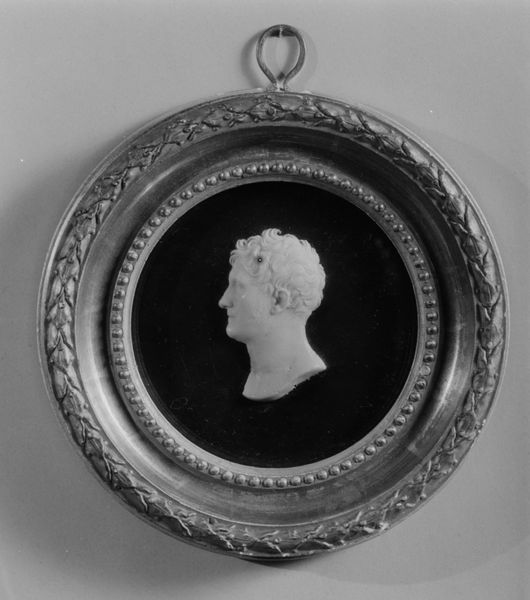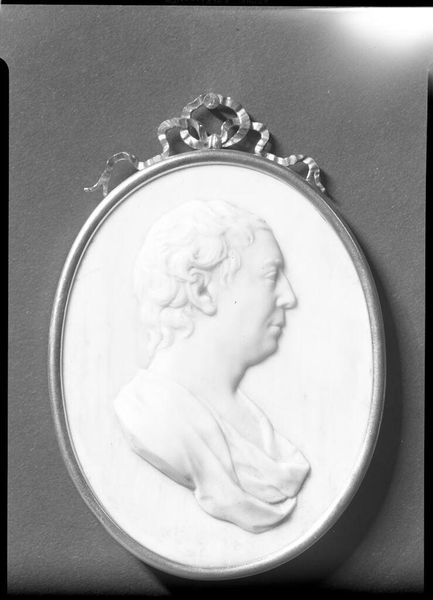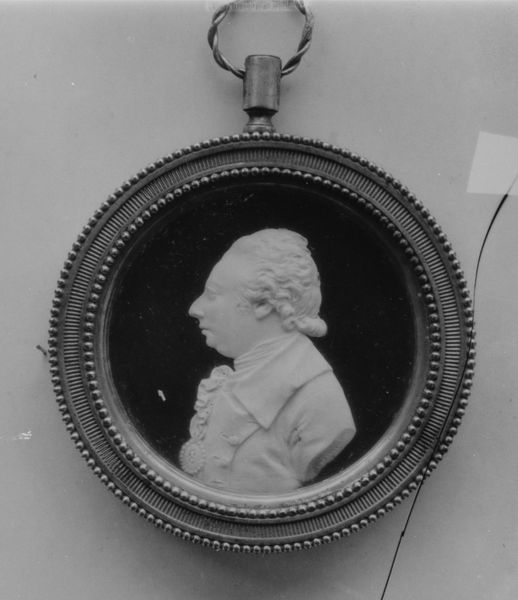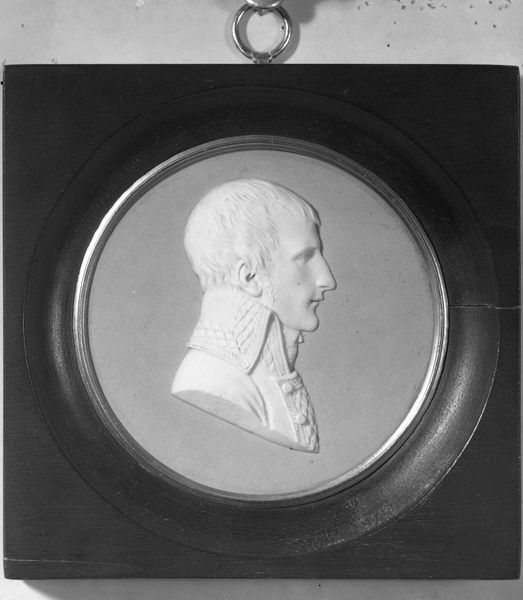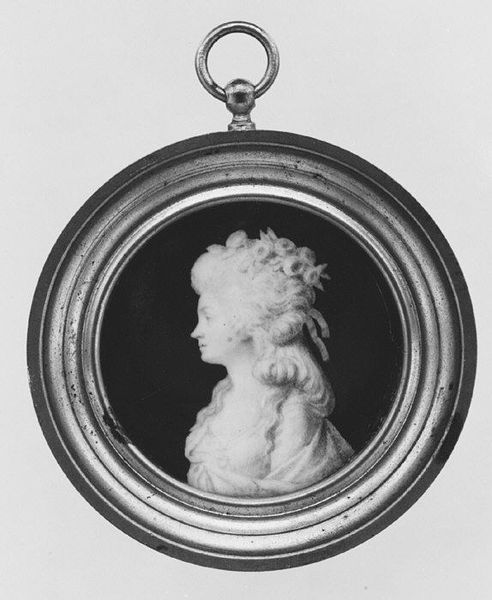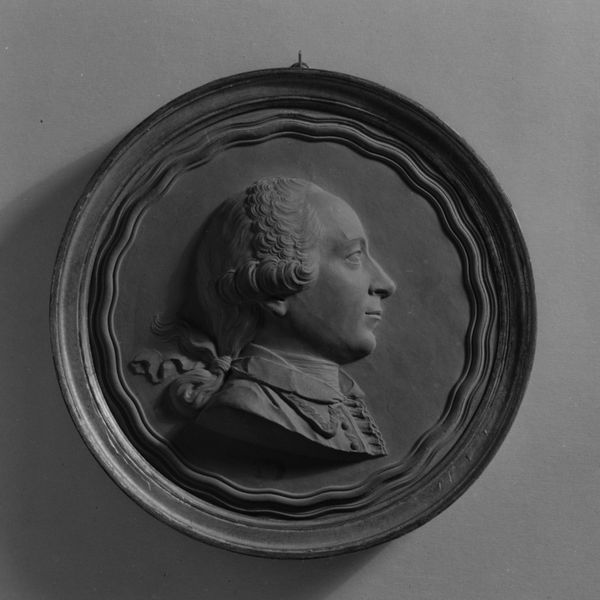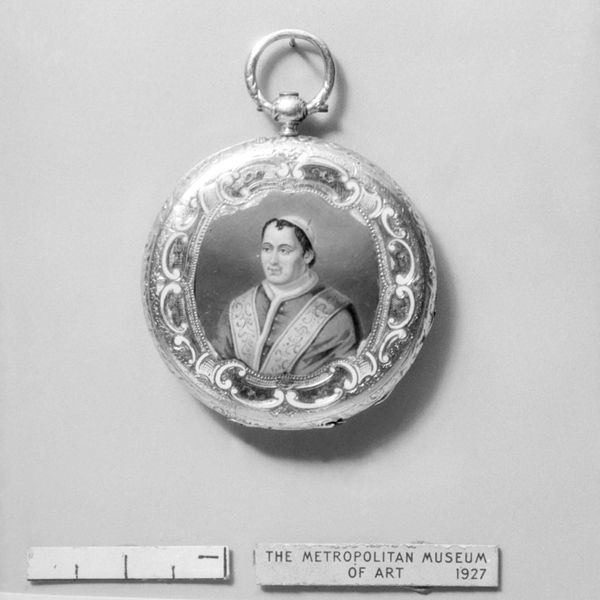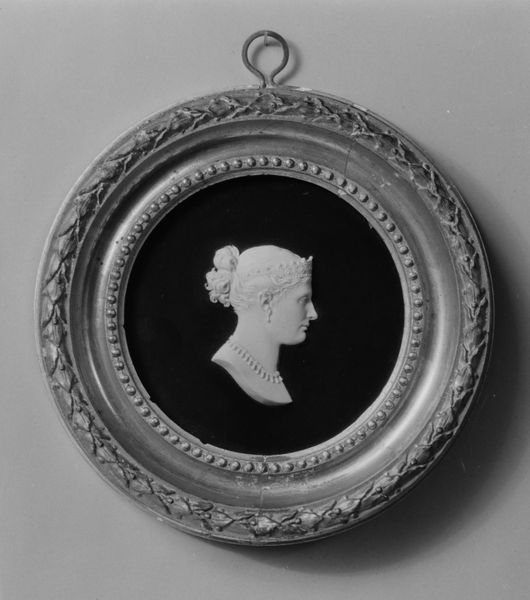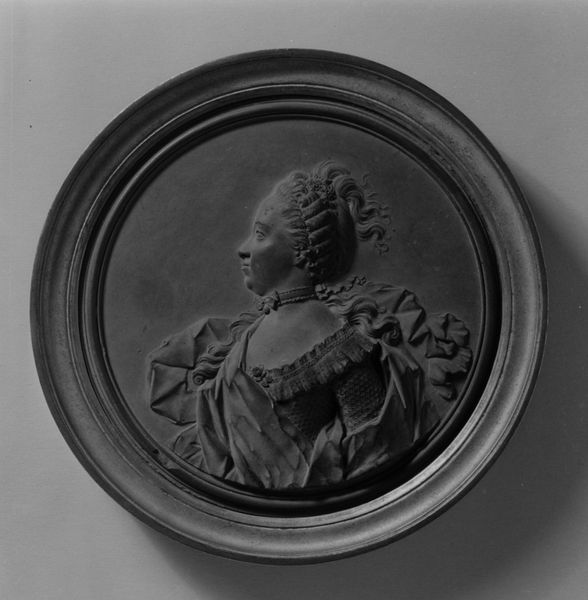
Arthur Wellesley, Duke of Wellington (1769–1852) 1813 - 1818
0:00
0:00
carving, sculpture, ivory
#
portrait
#
neoclacissism
#
carving
#
sculpture
#
sculpture
#
men
#
history-painting
#
decorative-art
#
ivory
#
profile
Dimensions: Diameter (sight): 2 3/8 in. (6 cm)
Copyright: Public Domain
Curator: Let’s take a look at this relief carving dating from 1813 to 1818. The piece presents a profile portrait of Arthur Wellesley, the Duke of Wellington. It’s rendered in ivory and set against a contrasting dark background. Editor: My first thought is that it's a very clean, almost austere portrayal. The high contrast between the ivory and the dark background immediately draws the eye. Curator: Absolutely. The Neoclassical style, evident in the sharp, precise lines and the subject’s idealized features, aims to convey authority and intellect. But what’s compelling to me is how Wellington, as a figure who benefited from and enforced a specific sociopolitical order, is memorialized in such an intricate and precious material as ivory, a material linked to colonialism and exploitation. Editor: The choice of ivory, indeed, speaks volumes about production and power. We should consider where the material originated, the labor involved in acquiring and carving it. The material itself encodes its own history. Curator: Precisely. Think about the politics embedded in commemorating Wellington this way, versus those who might have suffered under his command or been exploited to procure the materials. Whose stories are elevated and whose are silenced? Editor: Looking closely, the incredible detail achieved in ivory also interests me. Consider the time, skill, and craft involved in creating such intricate textures and details on his uniform, contrasting that precious labor against his military achievements. Curator: And doesn't that reinforce the dichotomy we're discussing? The Duke's legacy, inextricably tied to warfare and empire, is celebrated through a medium showcasing skilled labor but which depended on exploitation and hierarchy. The piece itself becomes a battleground of conflicting histories and ethics. Editor: Yes, it urges us to consider the complicated convergence of labor, legacy, and representation and think about how objects carry a story about who they represent as much as the processes used to create them. Curator: Indeed, considering this piece, especially within its historical moment, compels us to think critically about how power dynamics shape not only historical events but also their memorialization in art. Editor: It has also highlighted, for me, the ability of an artwork, such as this, to present very complex material histories that can make us rethink our perceptions around traditional presentation and style.
Comments
No comments
Be the first to comment and join the conversation on the ultimate creative platform.
